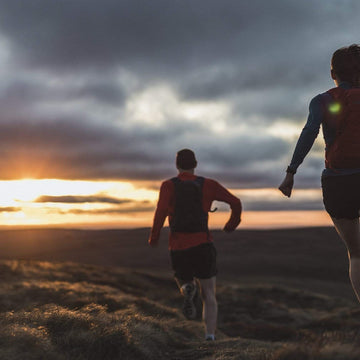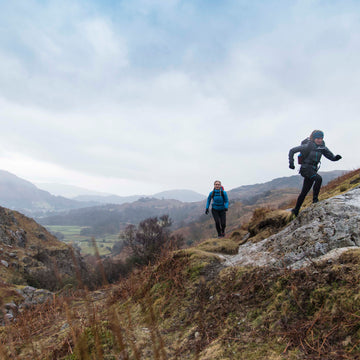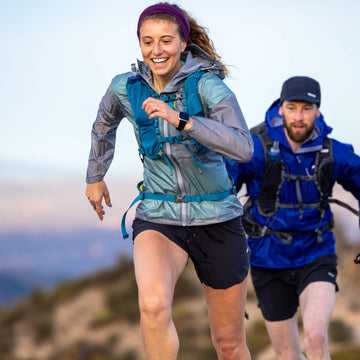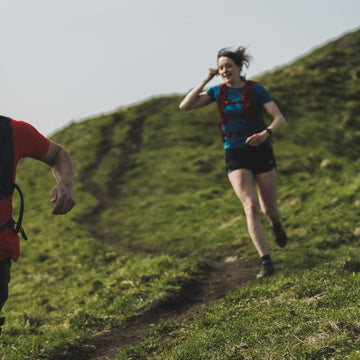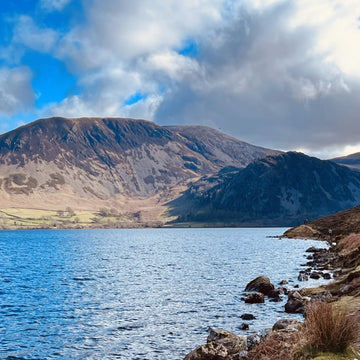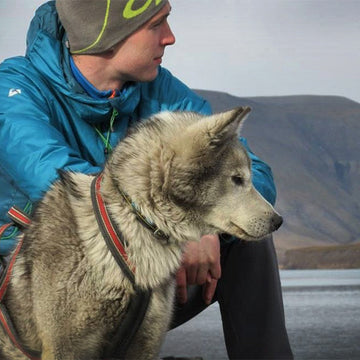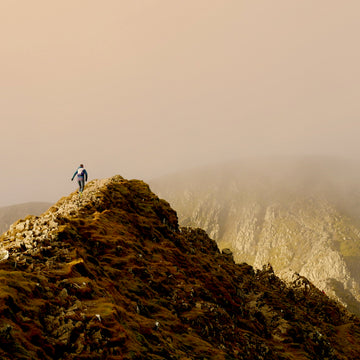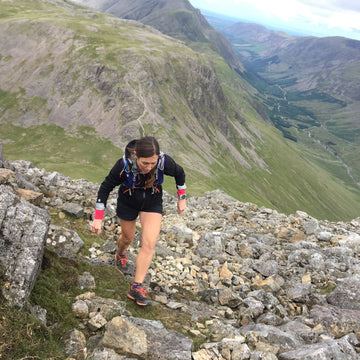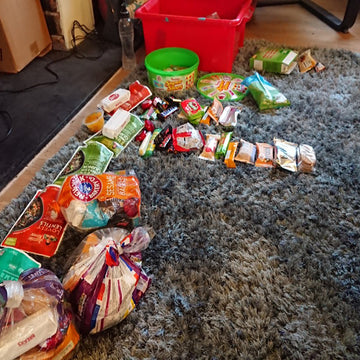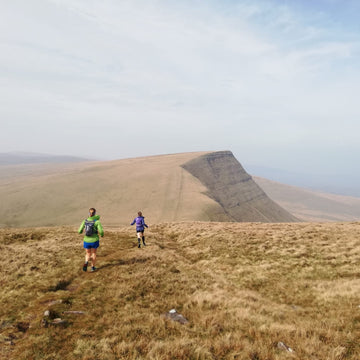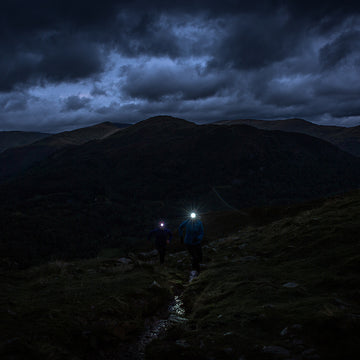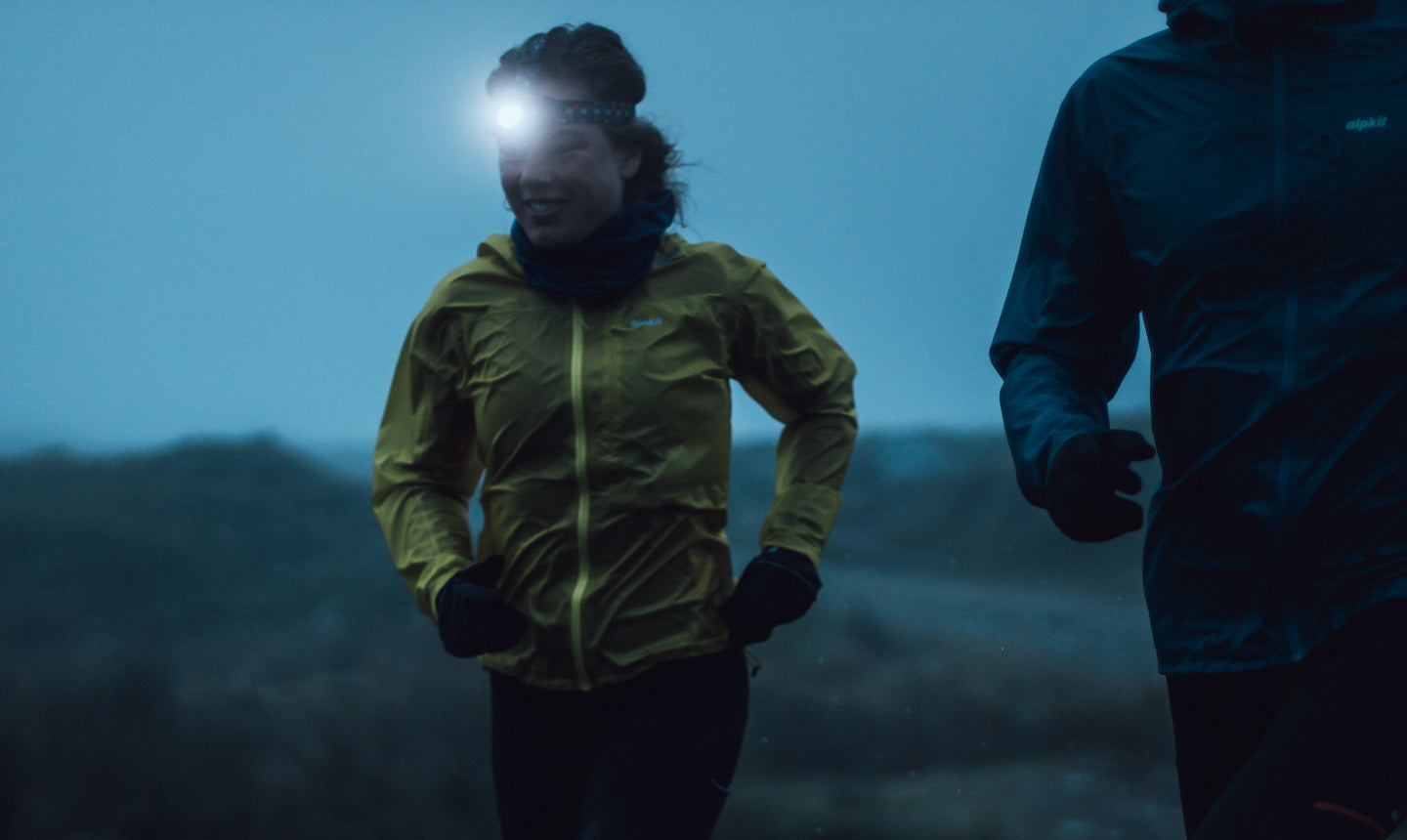
Stay motivated and safe this winter with our expert tips on cold weather running prep, layering, gear, and building your winter running routine.
There's always a sense of satisfaction from forcing yourself outside into the dark, the damp and the cold. But sometimes that's all there is!
Winter can be a long, hard slog for runners – it's not all bright, sunny mornings with a crisp frost underfoot. But getting through to spring without a period of running hibernation is easier than it seems. All you need is the right kit, know-how and a little bit of extra effort.
Meet Your Winter Running Guide
This guide has been created with North Wales-based adventurer Kat Roberts, who knows a thing or two about staying motivated through the darkest months. Living in North Wales means she's never short of incredible places to run – from steep mountain ascents to gentler hills and winding coastal paths. One of her favourite winter loops begins in the historic town of Conwy and climbs up to Mynydd y Dref, with the option to push on towards Tal y Fan or cut it short depending on conditions. When the weather's truly wild and the higher peaks feel too gnarly, she has a Grade 2 scramble right on her doorstep for that perfect mix of running and adventure.
Your 4-Week Winter Running Preparation Plan
Don't wait until the first freezing morning catches you unprepared. Here's how to transition smoothly into winter running:
Week 1: Test Your Kit
Take inventory of your current running gear. Try your existing layers on progressively colder days to identify gaps. If your hands go numb after 10 minutes or you're drenched in sweat, you've found what needs upgrading.
Week 2: Adapt to Darkness
Gradually shift your runs to darker times of day. Run familiar routes at dusk first, then try your headtorch on these known paths. Your eyes need time to adjust to reduced visibility and depth perception changes.
Week 3: Build Your Safety Kit
Assemble your emergency gear in a small dry bag. Practice accessing items with cold hands – you'll want to know exactly where everything is before you actually need it in a crisis.
Week 4: Full Dress Rehearsal
Do a complete winter run with all your layers, emergency kit, and navigation tools. This is your chance to fine-tune everything before the proper cold sets in.
What to Wear for Winter Running
Applying the classic outdoor layering system to your winter running clothing allows you to adapt to often unpredictable and changeable weather. Ultimately, what you wear will depend on the conditions, the intensity of your run, and how you personally respond to the cold. It's not always as simple as just opting for long sleeves and switching from shorts to leggings!
Temperature-Specific Layering Guide
Use this as a starting point and adjust based on your personal warmth and the intensity of your run:
Above 5°C: Base layer + long-sleeve technical shirt + lightweight vest or windproof. Consider shorts or 3/4 length tights depending on wind chill.
0-5°C: Base layer + mid-layer (like a breathable fleece) + windproof or light waterproof shell. Full-length tights. Hat and gloves essential.
Below 0°C: Merino base layer + insulating mid-layer + windproof/waterproof shell. Winter running tights. Thermal hat, neck warmer, and insulated gloves with windproof mitts. Consider adding a lightweight insulated gilet for your core.
Kat's tip: "I always pack spare gloves for longer runs. Your hands are the first to feel the cold, and wet gloves are miserable. That extra pair weighs almost nothing but can transform your run."

Tip #1 – Layer, layer, layer
Wearing multiple thin layers makes it much easier to control your temperature on the move than one warm jacket. Getting too hot in winter might not sound like a bad thing, but getting really sweaty can be dangerous if you cool down too quickly. Wearing multiple thin layers is also warmer as each layer you wear traps a thin layer of insulating air next to your body.
Go deeper with our article on Dressing for the Winter Trail Running Season to understand how to build a versatile three-season layering system.
Tip #2 – Breathability is king
You're gonna get sweaty, no matter how much you fine-tune your layers. It's even more important in winter to wear fast-drying, breathable layers throughout, from your base layer and midlayer right through to your windproof or waterproof. Wearing breathable layers allows moisture from your body to escape which stops you getting clammy and cold.
Magic Merino Wool
Merino wool is naturally breathable which makes Merino base layers perfect for running in winter. Merino wool works by absorbing moisture from your body into the structure of its fibres before releasing it to the outside. This allows it to absorb up to 35% of its weight in water before it feels damp to the touch, which stops you feeling cold and clammy.
The merino wool fibres also react to your body temperature and surrounding environment, releasing more moisture to evaporate when you overheat and releasing less as you cool. This keeps you at a comfortable temperature even as the conditions or your effort levels change.

Tip #3 – Be bold, start cold
It's tempting to head out wrapped up in all your warm layers – especially first thing in the morning when it's cold and dark outside. But you'll soon warm up, particularly on harder or faster runs, and may regret wearing all those layers if you haven't got a running pack or waist belt to stash them in.
The 10-degree rule: Dress as if it's 10°C warmer than the actual temperature. You should feel slightly chilly for the first 10 minutes of your run. If you're comfortable standing still at your front door, you'll overheat once you get moving. That initial chill is your body's way of telling you you've got the layers just right.
Tip #4 – Make micro-adjustments
It's amazing how much difference a hat, gloves, or neck warmer can make. These extra bits of clothing can easily be taken on and off on the move, and stashed in a pocket when you warm up. These accessories regulate up to 40% of your body heat, so getting them right makes a huge difference to your comfort.
Tip #5 – Get your lugs out
Mud. Miles of mud. As far as the eyes can see. Dry, hardpacked trails start to feel like a distant dream the deeper we get into winter. Trail running shoes with deep lugs – pointy tread patterns a bit like the studs on football boots – provide much better grip on wet and slippery off-road surfaces. And widely spaced lugs tend to clog up less in sticky mud.
For icy conditions, consider microspikes or trail shoes with carbide-tipped studs. These provide essential traction on frozen ground and can prevent dangerous slips on exposed sections.
Tip #6 – Stay visible and safe
With darkness arriving early and lingering late, visibility becomes critical for winter running safety. If you're running on roads or shared paths, make yourself unmissable:
The 50-metre rule: If you can't see clearly for 50 metres ahead, you need a headtorch. This isn't just about seeing obstacles – it's about giving drivers, cyclists, and other trail users enough time to spot you.
Kat's headtorch advice: "I wouldn't go high into the hills or mountains without a 500 lumen or higher headtorch. The Qark is my go-to choice for winter running – that adjustable beam makes all the difference when you're navigating technical terrain in the dark."
Layer your visibility: Front and rear lights for road running, reflective details on moving parts (ankles, arms) catch attention better than static reflective panels, and high-vis colours in yellow or orange show up better than white in car headlights.

Recognising Winter-Specific Hazards
Winter brings unique risks that summer runners rarely face. Knowing what to look for can help you make smarter decisions on the move:
Ice identification: Black ice forms on shaded paths, under tree cover, and on north-facing slopes. If a puddle doesn't splash or ripple, it's frozen. Damp-looking roads that have a slight sheen can be treacherous – when in doubt, test your footing before committing your weight.
Shortened daylight planning: Calculate sunset time and subtract 30 minutes as your turnaround point for out-and-back routes. It gets dark faster than you think in valleys and tree cover. Always tell someone your planned route and expected return time.
Cold-related injuries: Frostbite most commonly affects fingers, toes, ears, and nose. Early warning signs include numbness and skin turning white or grayish-yellow. If you notice these symptoms, get inside immediately and warm the affected area gradually – never with direct heat.
Stop and Reassess: Warning Signs
Your body gives you clear signals when things are going wrong. If you experience any of these, stop running immediately, put on all your layers, consume food and warm fluids if you have them, and head back or call for help:
- Uncontrollable shivering that doesn't stop with continued movement
- Fumbling hands that can't manage zips, bottle caps, or other simple tasks
- Confusion, poor decision-making, or feeling unusually irritable
- Numbness in extremities lasting more than 5 minutes despite movement
- Slurred speech or difficulty coordinating movements
- Intense fatigue that feels different from normal running tiredness
These are early signs of hypothermia. Don't push through – get warm and get safe.
Don't Get Caught Out On Long Runs
It's surprisingly easy to get into trouble on long winter runs, especially if the weather turns or you roll an ankle in the middle of some remote moorland. Setting off prepared for every eventuality (within reason) gives you the reassurance that you can get yourself out of sticky situations.
Keep a small dry bag packed with a few essentials so you can fly out the door without spending half your morning packing. The Fell Running Association minimum race kit list is a good place to start. But for longer, more remote runs you may want to consider packing a stripped-back version of what you'd carry in a hillwalking daypack, including a very basic first aid kit.
Kat's perspective: "Having extra layers isn't just about personal comfort – it's vital if you're injured and need help to get off the mountain. A lightweight insulated jacket or emergency shelter weighs very little but could be lifesaving if you have to wait for assistance in exposed conditions."
Head torch – A good running head torch allows you to keep your feet (and incisors!) when the light fails. It can also be used to signal for help in an emergency. Choose one with at least 500 lumens for mountain and trail running.
Spare warm layer – Always pack one more layer than you think you'll need, whether it's a lightweight insulated jacket or a waterproof jacket and trousers to keep the wind off.
Map and compass – The lithium-ion batteries in your phone or GPS can plummet without warning in cold weather. Luckily, a map and compass will never run out of battery. You could print/photocopy the section of map you need or take a mini Harvey Ultramap to save weight. Keep your phone warm against your body to preserve battery life.
Charged phone – Essential if you need to call for help in an emergency. Keep it in an inside pocket close to your body – the warmth preserves battery life. A bit of spare cash for emergency transport or cafe stops is always useful too.
Survival bag – That extra 105g is worth carrying if you ask us. Hopefully you'll never have to use it, but if you do need it, you'll be incredibly grateful it's there.

Keep Fuelled And Hydrated
Staying warm when winter running is about more than just packing on the layers. Make sure you stay hydrated and eat enough food to keep you going. Your body burns through the calories to keep you warm and your legs moving. If you run out of fuel, your core body temperature can drop. Once that goes it's harder to keep everything else warm.
The type of snack often depends on the run – and the snacker (or 'snackeur') in question. A banana back at the car is usually enough for shorter runs (up to 10km). For longer runs, snacks like rice cakes, flapjacks and trail mix provide a high number of calories. For really long runs, you might need to bring out the big guns: jam and peanut butter wraps and cold pizza! Snacks like these help you to avoid a sugar crash and will keep you going for longer.
It's surprisingly easy to get dehydrated in winter as cold weather reduces your thirst response. Adding some squash or electrolyte tablets to your water bottles can make it easier to drink. We'd always recommend carrying emergency food too, just in case a serious bonk strikes when you've run out of snacks!
Preventing Frozen Water
Keep your water from freezing on longer winter runs by storing bottles inside your pack close to your back, using an insulated bottle sleeve, or filling bottles with warm (not hot) water before you head out. Soft flasks tucked into vest pockets are less likely to freeze than hard bottles, and if you're using a hydration bladder, blow water back into the reservoir after each sip to prevent the tube from freezing.

Adapting Your Training for Winter
Winter running isn't just about having the right kit – it's about adjusting your expectations and approach to training in challenging conditions.
Slow down (and don't worry about it): Ice, darkness, and technical terrain naturally reduce your pace. A run that takes you 45 minutes in summer might take an hour in winter – and that's completely normal. Focus on effort level rather than speed, and remember that winter miles build exceptional mental resilience.
Adjust your intervals: If you're doing structured training, consider shorter, more intense intervals rather than long tempo efforts when conditions are particularly harsh. This reduces your total exposure time while maintaining fitness.
Build in extra recovery: Cold weather is more demanding on your body. You're working harder just to stay warm, and the mental effort of navigating in darkness or on technical terrain adds up. Don't be surprised if you need an extra rest day or two each week.
Have a plan B: Some days are genuinely too dangerous to run outside – black ice, severe storms, or extreme temperatures. Have an indoor alternative ready: a treadmill session, gym workout, or strength training routine. Missing one outdoor run is better than risking injury.
Do Your Post-Run Prep
Nothing keeps you going at the end of a long, cold run better than the knowledge that you'll soon be nice and warm with a full belly.
Getting dry
If you're driving to the start of a run, leave a towel and some dry clothes in your car to change into afterwards. Just pulling off your sweaty base layer and pulling on a soft cotton tee is enough to stop you getting cold and shivery. You might want to bring a changing robe too if it's a busy car park!
Wait about 10 minutes before jumping into a hot shower. Your core temperature needs time to stabilize, and sudden extreme heat can cause your blood pressure to drop. Use the time to stretch gently in a warm room.
Getting fed
Recovery shakes are a fast and easy way to replace lost energy and help your body to repair after a hard effort. But a flask of tea/coffee/hot chocolate and a hot meal will really give you something to look forward to at the end of your run. Dehydrated meals like Firepot food pouches are useful if you're a long way from civilization. If you can wait till you get home, beans on toast provides the perfect balance of carbohydrates and protein for recovery and only takes a couple of minutes to make.
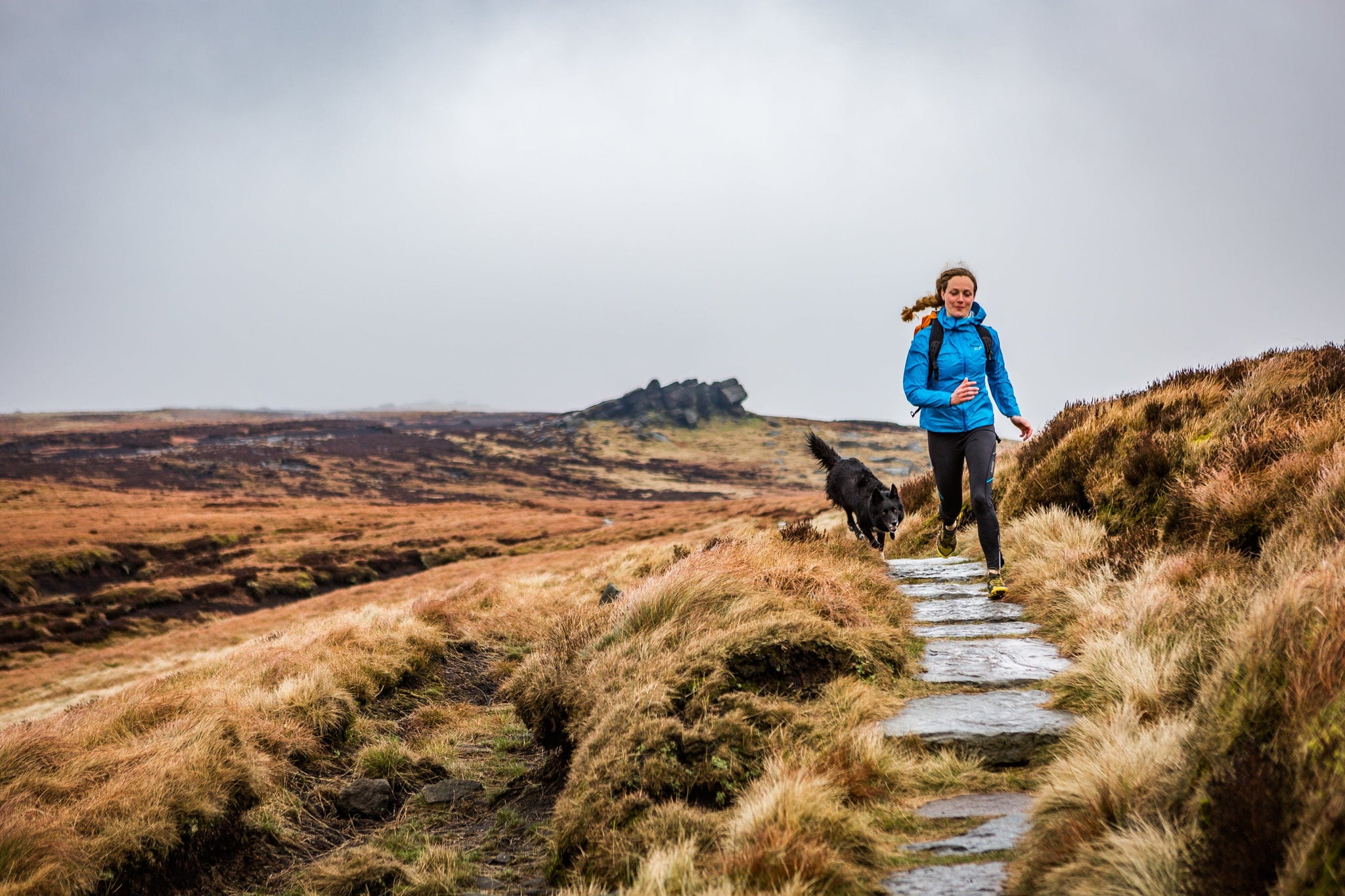
How To Stay Motivated For Running Through Winter
Sometimes the mental struggle to get out during winter can be tougher than the physical one. Our houses are cosy and warm, the weather's often worse and the dark mornings and evenings feel far from inviting. How on earth do you keep going when its so dark, cold and damp outside?
The 10-minute rule – The hardest part is getting out the door. Promise yourself you'll run for just 10 minutes. If you still hate it after that, you can turn back with no guilt. You almost never will. This mental trick removes the overwhelming commitment of a full run and gets you moving.
Warm up inside – Be bold, start cold still applies but warming up inside definitely reduces the shock of stepping outside into the cold air. Five minutes of dynamic stretches or light movement before you head out makes a huge difference.
Remove the decision point – Lay out all your kit the night before. If you run in the mornings, set your coffee on a timer. If you run after work, bring your kit with you and change before you leave – don't give yourself the chance to talk yourself out of it once you're home on the sofa.
Plan new routes – It's easy to get bored of the same old loops. Exploring new areas fires up your sense of adventure and stops your running from feeling routine. Even small variations – running your usual route backwards, or taking a different turn – can make it feel fresh.
Run with a friend – It's harder to back out when you've already committed to meeting someone. And when it's truly minging outside, at least you've got someone to laugh about it with. The shared suffering becomes part of the story you'll tell later.
Keep a 'warrior run' log – Every time you run in terrible conditions, record it. Note the weather, how you felt beforehand, and how you felt afterwards. These become your proudest achievements and proof that you can do hard things. On days when motivation is low, read back through your log.
Set yourself a goal – Having something to work towards always helps when you're trying to drag yourself out of the house. It doesn't matter what your goal is: beating your 5K time, running a half marathon or making it to the top of a notoriously steep climb without stopping. Setting smaller short-term goals along the way gives you a little boost and stops you from getting too deflated.
Sign up to an event – Nothing focuses the mind more than the fear of turning up to a race or event completely unprepared. Plus, ticking off the steps on a training plan can be a satisfying way of keeping up your motivation. Spring races give your winter training a clear purpose.
Celebrate the small wins – Ran in the rain? That's a win. Got out before sunrise? Win. Chose running over Netflix? Absolutely a win. Winter running is as much about showing up as it is about performance.

Winter Running Kit List
No winter running kit list will fit everyone – we've seen gnarly fell runners out on the moors in 3 inch shorts and their club vest, even in the depths of winter! North Wales-based adventurer Kat Roberts has put together a list of items that keeps her heading out every winter.

- Waterproof running jacket - An ultralight, breathable shell like the Gravitas is essential for winter trail running protection against rain and wind.
- Technical running underwear - Fast-drying, moisture-wicking base layer underwear (such as FKT) helps prevent chafing and maintains body temperature in cold conditions.
- Winter running beanie - A merino wool blend hat like the Norden with fleece liner provides essential head warmth without overheating.
- Trail running gaiters - Breathable gaiters (like Kantju) keep debris, snow, and moisture out of your shoes on winter trails.
- Running gloves - Midweight fleece gloves with windproof mitts, such as Specta, offer versatile hand protection for varying winter temperatures. Pack a spare pair for longer runs.
- Trekking poles - Ultralight carbon poles (like Nanolite) provide stability on icy or technical winter terrain and aid in ascents.
- Long-sleeve technical shirt - A recycled fabric base layer with odour-control technology, such as the Koulin Trail Long Sleeve, works well for winter layering systems.
- Neck warmer - A merino neck gaiter or buff (like the Kepler Draught Excluder) protects against wind chill and can cover your face in extreme conditions.
- Headtorch - With shorter daylight hours, a rechargeable headlamp such as the Qark (580 lumens with adjustable beam) is crucial for winter trail visibility. Look for 500+ lumens for mountain running.
- Running vest or pack - A lightweight running pack (10L capacity like the Artlu 10) carries winter essentials for longer trail runs.
- Hydration system - A soft flask like Swiglet fits easily in vest pockets and won't freeze as quickly as hard bottles.
- Merino wool running socks - Blended merino socks (such as Repeat) provide warmth, moisture management, and blister prevention on cold, wet trails.
- Wind-resistant mid-layer - A breathable, fleece-lined jacket like Morphosis adds critical insulation for exposed winter running.
- Winter running tights - Technical trail leggings with pockets and excellent breathability (like Koulin Trail Tights) keep legs warm while managing sweat during high-output winter runs.
Safety Essentials
- Compass (Williams Compass)
- Map
- Survival Bag
- Charged mobile phone (kept warm in inside pocket)
- Emergency food and warm drink
- Lightweight insulated jacket or extra layer

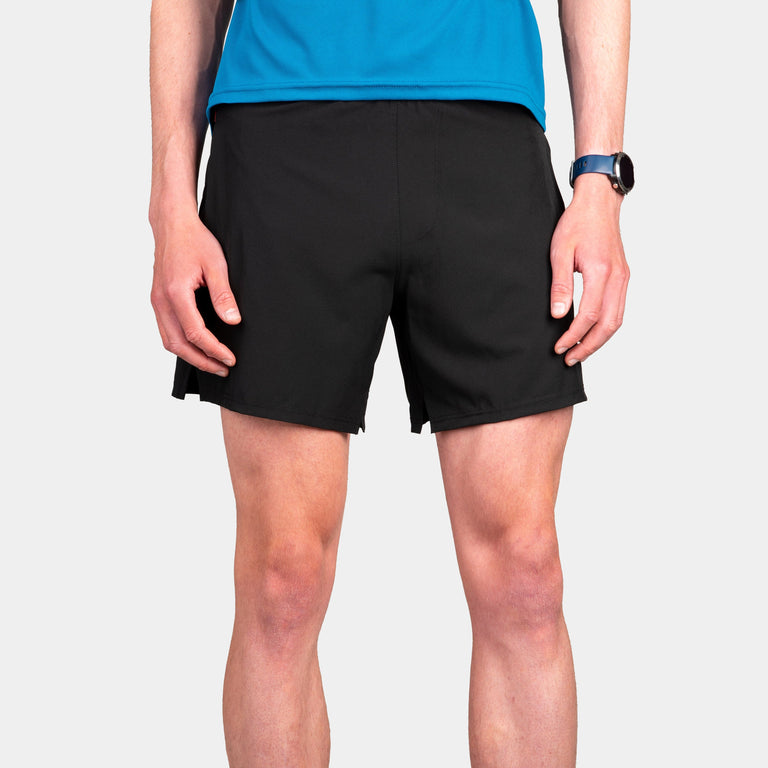
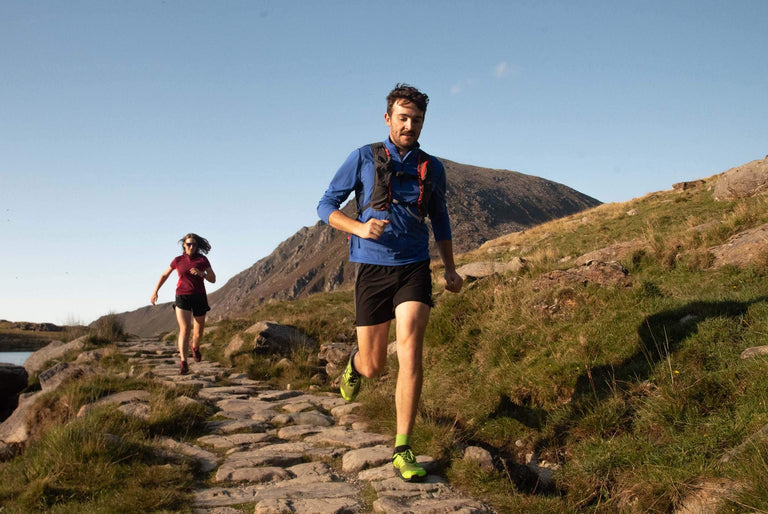
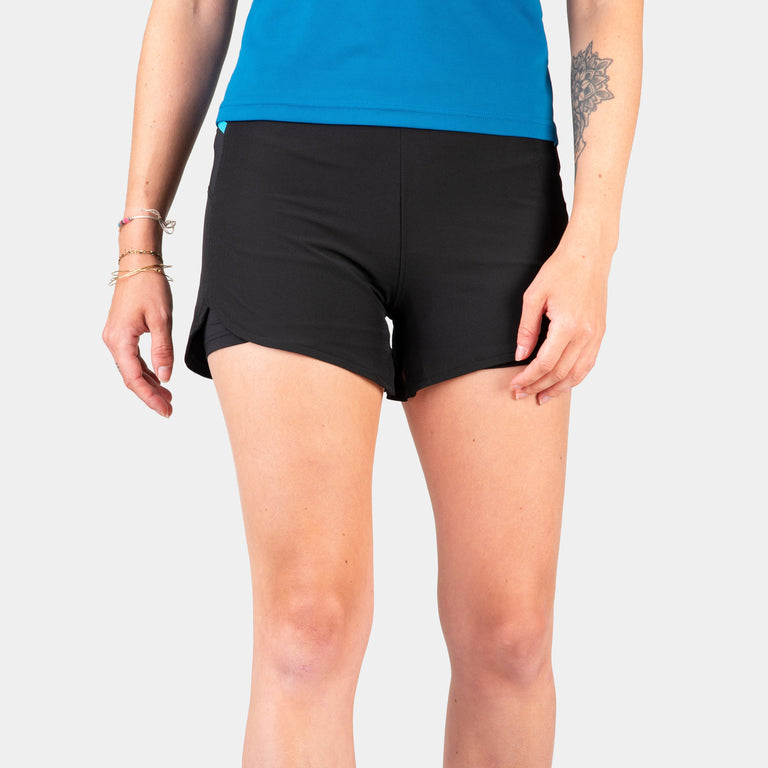
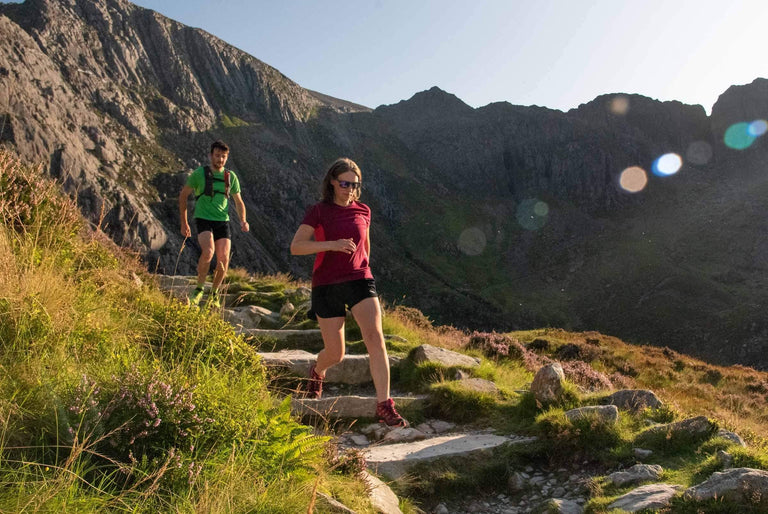
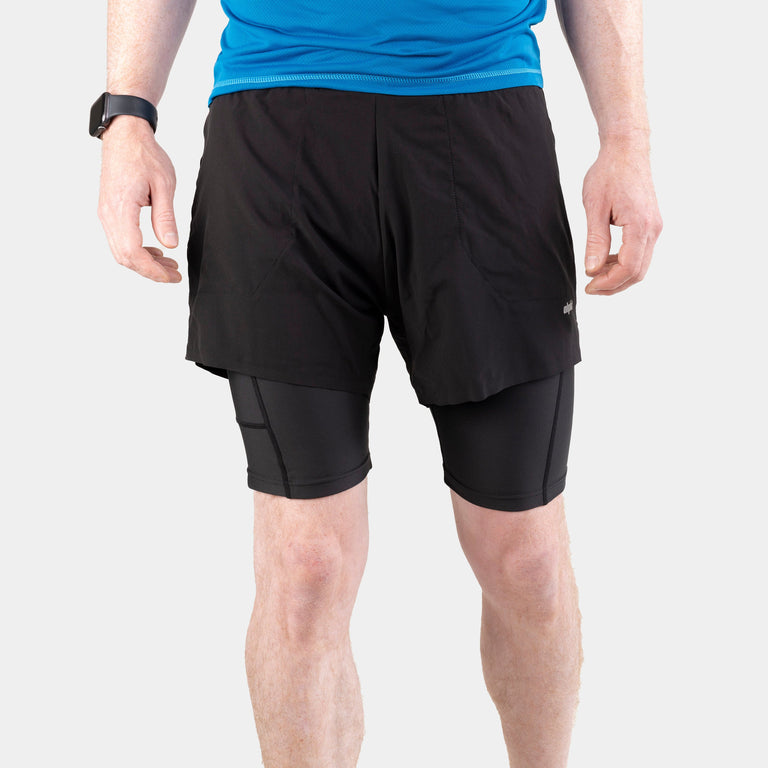
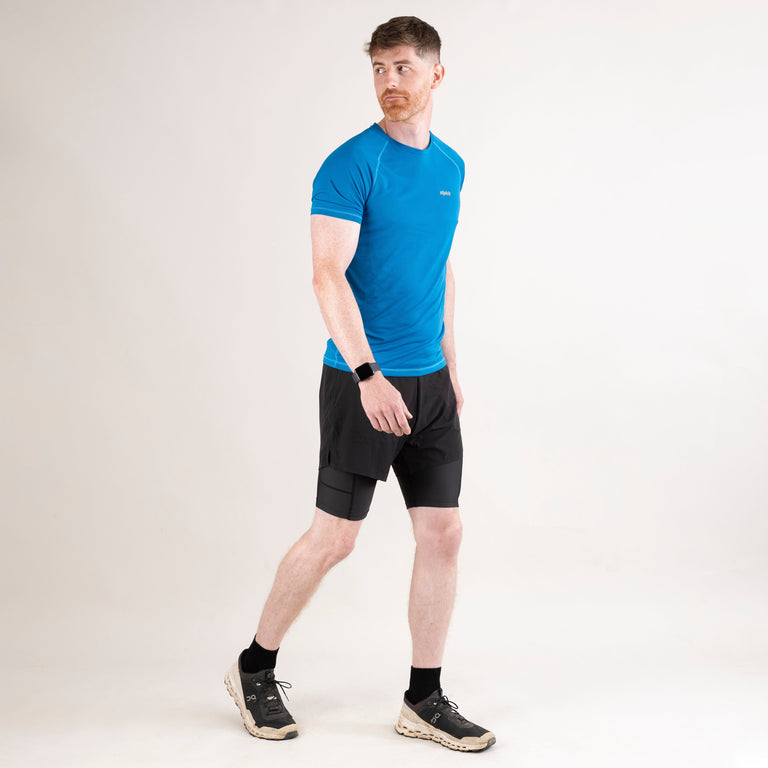
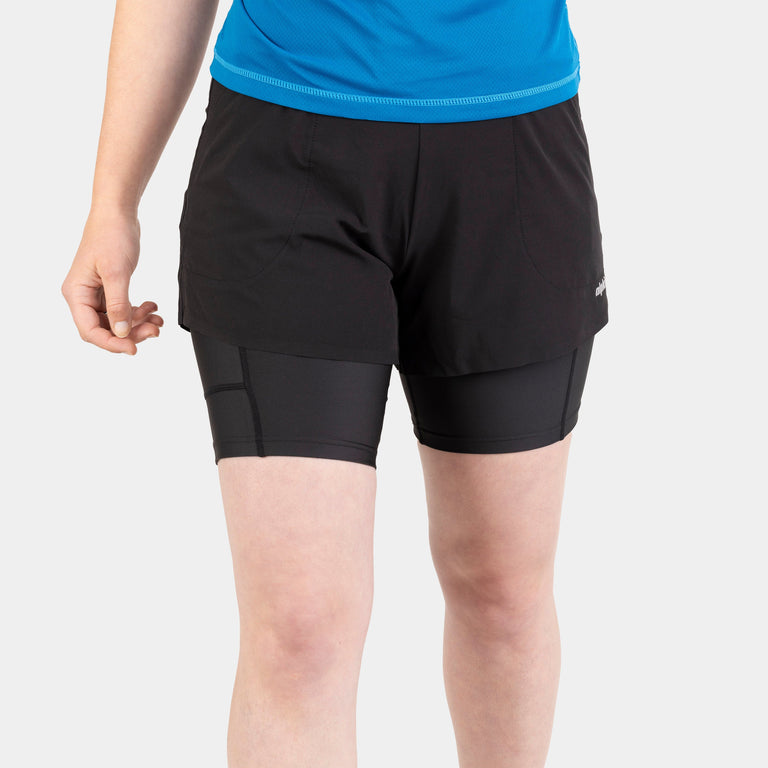
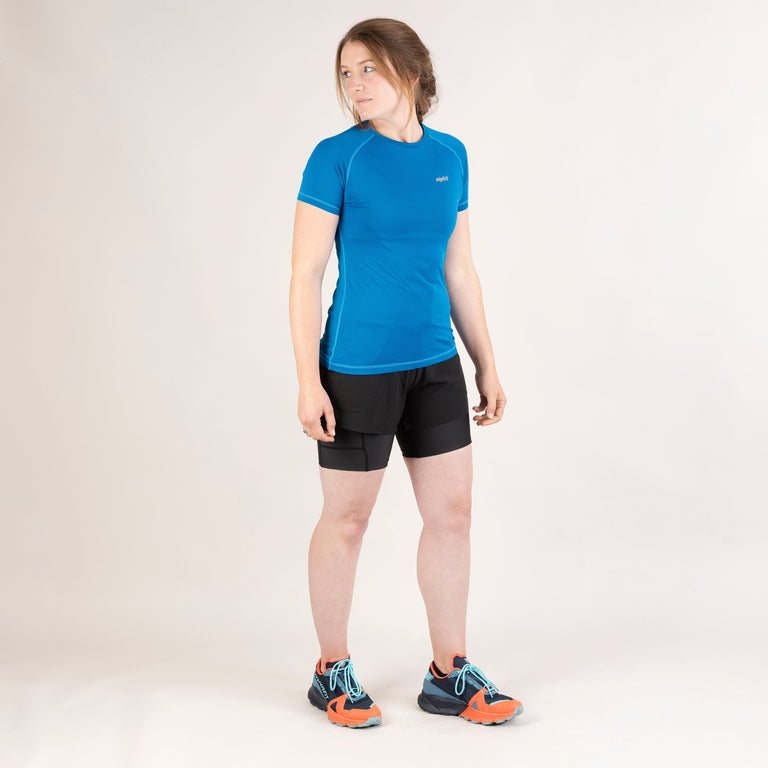
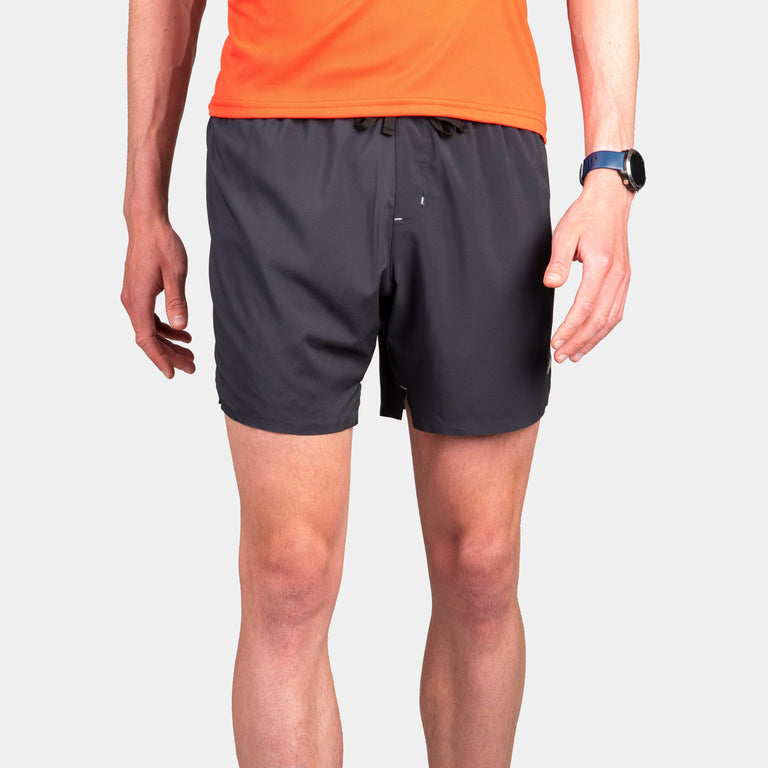
![Vayper Short 6 [Mens]](http://alpkit.com/cdn/shop/files/VAYPER_MENS_TENERIFE_005312__4000px_533bc924-d067-4d39-a146-d80f1ae20554.jpg?v=1695900862&width=768)
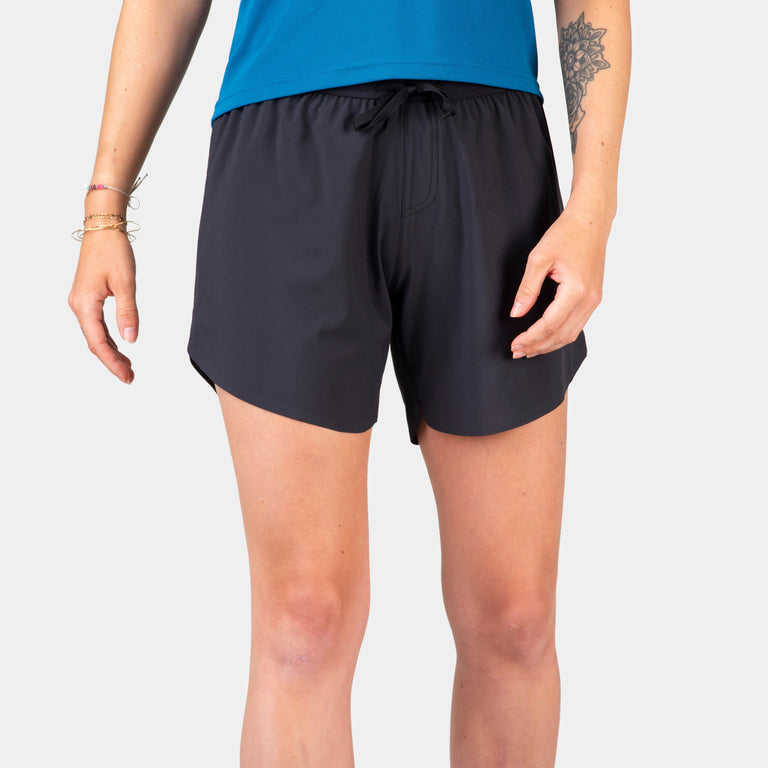
![Vayper Short 5 [Womens]](http://alpkit.com/cdn/shop/files/VAYPER_WOMENS_TENERIFE_004825__4000px_d8e2adcc-be0e-4ef5-9c7f-14a502f85f2b.jpg?v=1695908657&width=768)
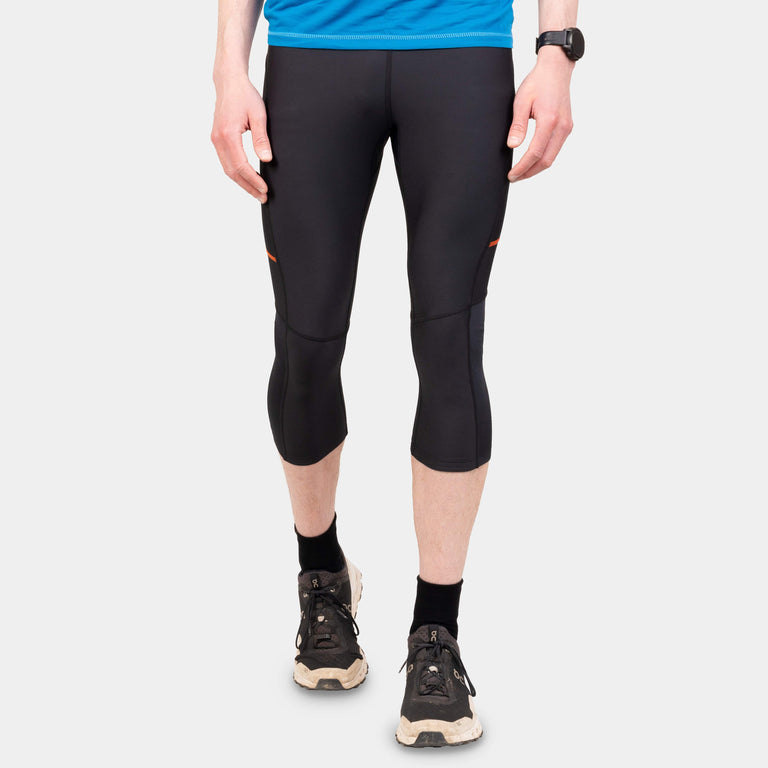
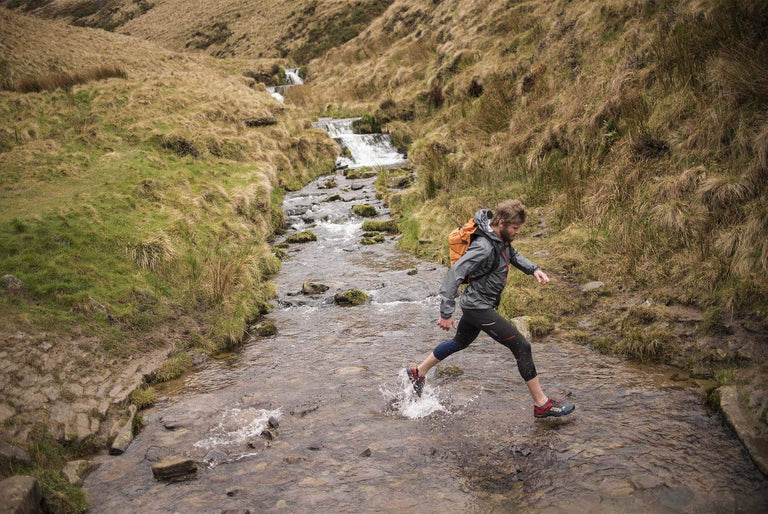
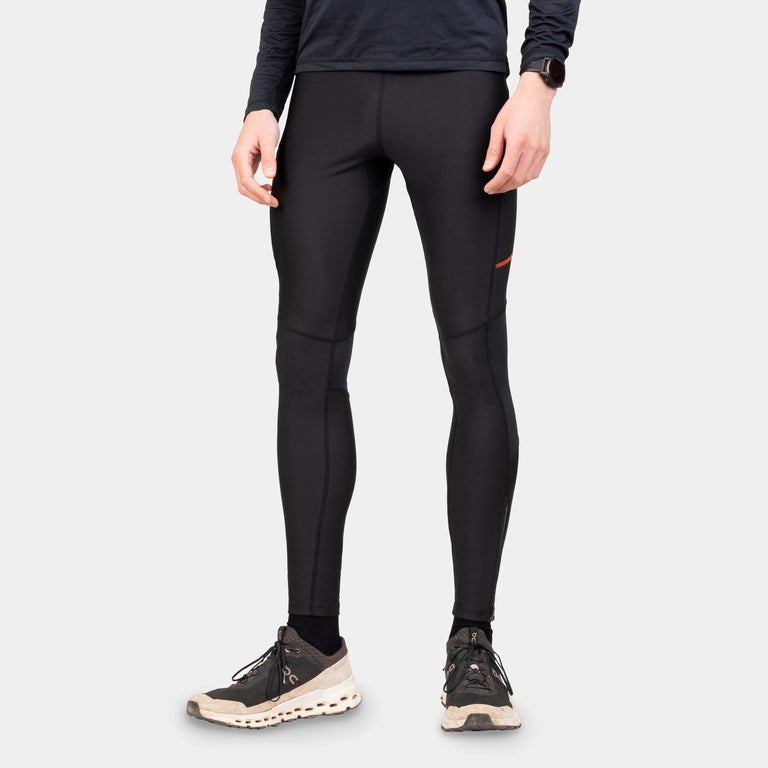
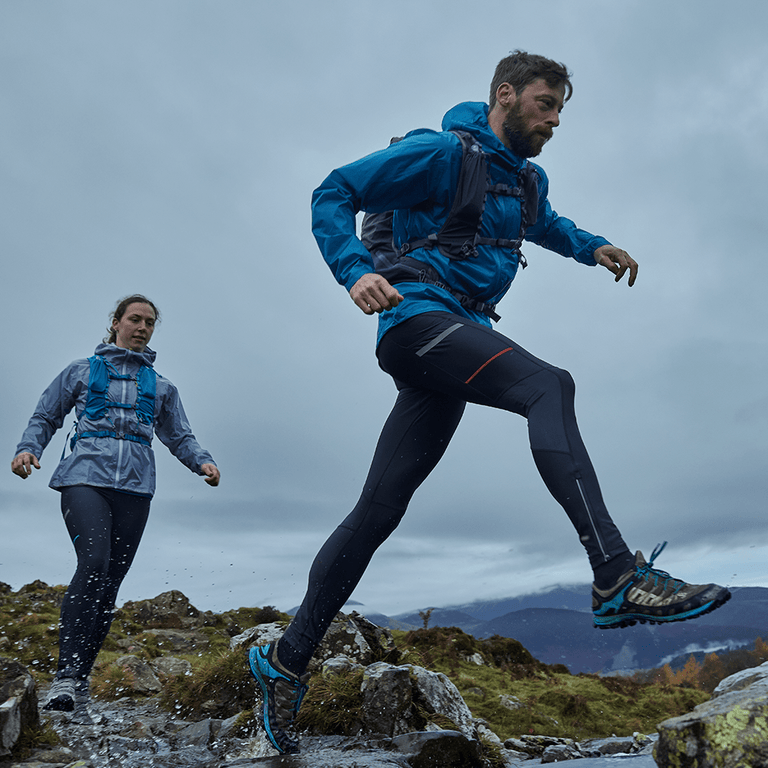
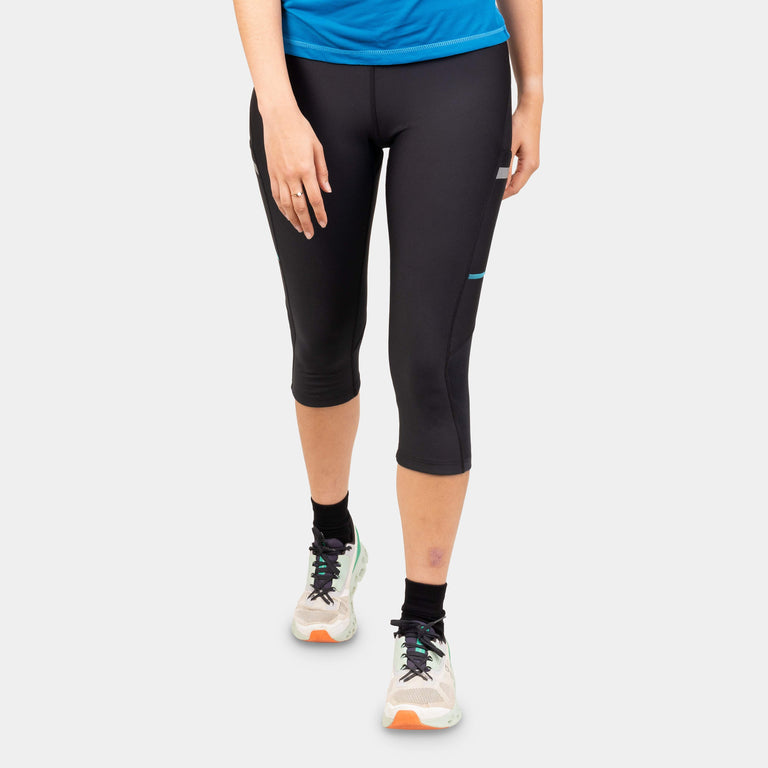
![Koulin Trail 3/4 Tights [Womens]](http://alpkit.com/cdn/shop/files/Running_C3_001637_1.jpg?v=1762197763&width=768)
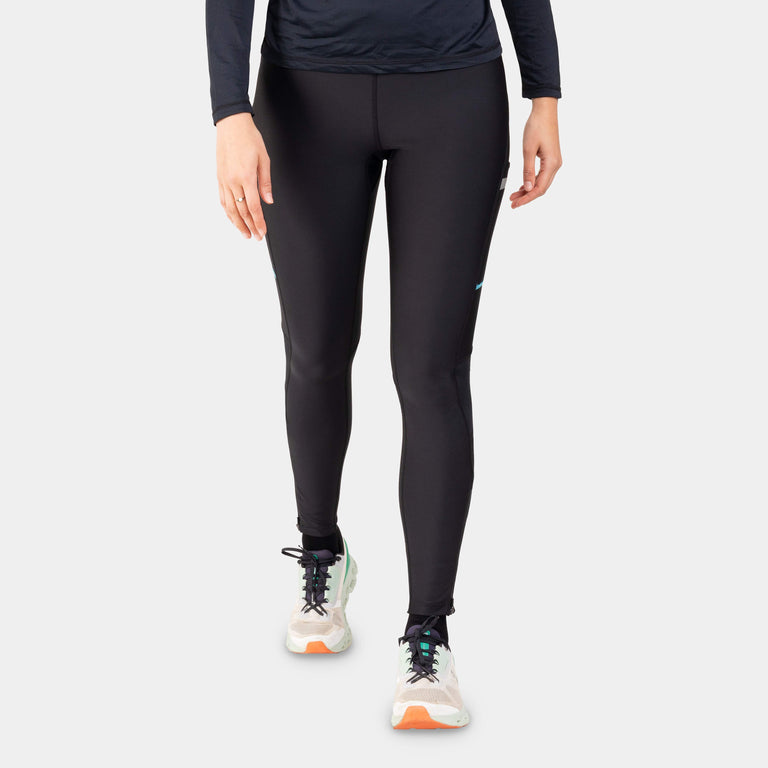
![Koulin Trail Tights [Womens]](http://alpkit.com/cdn/shop/files/RUN_AW24_Chamonix_0695_1.jpg?v=1762197763&width=768)

![Mello Tight [Womens]](http://alpkit.com/cdn/shop/files/OUTPOST-14_SS23_MALAGA_RUN_Card_2_001009__1.jpg?v=1764159970&width=768)
![Mello Long Short [Womens]](http://alpkit.com/cdn/shop/files/womens-mello-long.jpg?v=1764159906&width=768)
![Mello Long Short [Womens]](http://alpkit.com/cdn/shop/files/womens-mello-long-short-1.jpg?v=1764159906&width=768)
